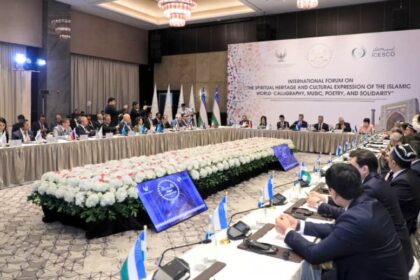Introduction: A Bold Experiment Faces Uncertain Future
South Korea’s pilot program to bring Filipino domestic workers to Seoul was launched in September 2024 with high hopes and significant fanfare. Designed to address the country’s record-low birthrate and the mounting pressures on dual-income families, the initiative aimed to provide much-needed childcare and household support. However, less than a year after its inception, the program’s future hangs in the balance amid political upheaval, labor disputes, and unresolved questions about cost, oversight, and worker protection.
- Introduction: A Bold Experiment Faces Uncertain Future
- Origins and Objectives: Addressing a National Crisis
- Implementation: High Hopes and Early Challenges
- Wages and Access: The Cost of Care
- Worker Experiences: Between Opportunity and Exploitation
- Political Shifts: A Program in Limbo
- Broader Implications: Immigration, Gender, and Social Change
- Lessons from Abroad: Comparative Perspectives
- Current Status and the Road Ahead
- In Summary
The program’s uncertain status reflects broader debates in South Korea about immigration, labor rights, and the nation’s demographic crisis. As the country grapples with an aging population and a shrinking workforce, the pilot has become a focal point for discussions about how best to support families and ensure fair treatment for foreign workers.
Origins and Objectives: Addressing a National Crisis
The idea for the pilot program emerged from a sense of urgency. South Korea’s fertility rate has plummeted to 0.72, the lowest in the world, with Seoul’s rate even lower at 0.55. This demographic decline threatens the country’s economic future and places immense strain on working parents, especially women, who often bear the brunt of caregiving responsibilities.
During a cabinet meeting in 2022, Seoul Mayor Oh Se-hoon proposed the importation of foreign domestic workers as a solution. The plan, modeled after similar policies in Singapore and Hong Kong, sought to recruit 100 trained caregivers from the Philippines—a country with a well-established system for certifying domestic workers. The program prioritized dual-income, single-parent, and large families in Seoul, aiming to make childcare more accessible and affordable.
Supporters hoped the initiative would not only ease the burden on families but also help reverse the country’s declining birthrate by making it easier for women to remain in the workforce. The program was also seen as a way to address shortages in the caregiving sector, which is expected to face a deficit of 1.55 million workers by 2042 due to South Korea’s rapidly aging society.
Implementation: High Hopes and Early Challenges
The first group of 100 Filipino domestic workers arrived in Seoul in August 2024, following a rigorous four-week training program that included language and cultural orientation. They were placed in households across the city, serving as full-time or part-time caregivers. The program guaranteed each worker a minimum of 30 hours per week, with the possibility of working up to 52 hours, including overtime and holiday pay.
From the outset, the program was closely monitored by both the Seoul Metropolitan Government and the Ministry of Employment and Labor. Officials emphasized the importance of fair working conditions and support for the caregivers, who were employed through two government-appointed agencies. The initial response from participating families was largely positive, with an 84% satisfaction rate reported in early surveys.
However, challenges quickly emerged. Confusion over job scope, cultural differences, and wage debates surfaced almost immediately. Some workers reported being asked to perform tasks outside their contracts, such as pet care, English tutoring, or chores for extended family members. Others faced delayed wages and unclear employment boundaries, raising concerns about oversight and worker protection.
Wages and Access: The Cost of Care
One of the most contentious issues has been the cost of employing foreign domestic workers. South Korea, as a signatory to international labor agreements, is required to provide foreign workers with the same minimum wage rights as Korean nationals. This pushed the initial service fee to 13,940 won per hour (about $10.20), rising to 16,800 won ($12.29) in 2025. For a family hiring a full-time caregiver, the monthly expense—including social insurance—can reach 2.06 million won (about $1,540), nearly half the average monthly household income in Korea.
By comparison, domestic workers in Hong Kong earn a minimum of US$642 per month, while those in Singapore and Malaysia receive even less. The higher wages in South Korea make it the most lucrative destination for foreign domestic workers in Asia, but also limit access to the program. Data shows that 43% of applications came from Seoul’s wealthiest districts—Gangnam, Seocho, and Songpa—prompting criticism that the initiative primarily benefits affluent families.
Seoul Mayor Oh Se-hoon and other city officials have argued for exemptions from the minimum wage to make the service more affordable, citing Singapore and Hong Kong as examples. However, the Ministry of Employment and Labor has rejected these proposals, citing the Labor Standards Act and International Labor Organization (ILO) conventions that prohibit wage discrimination based on nationality. This legal requirement has become a major barrier to expanding the program beyond its pilot phase.
Worker Experiences: Between Opportunity and Exploitation
For the Filipino caregivers themselves, the program has been a mixed experience. On the one hand, the wages offered in South Korea are substantially higher than those available in other Asian cities, providing significant economic opportunities for workers and their families back home. Many workers have reported positive experiences, with some expressing appreciation for the chance to live and work in Seoul, despite minor communication difficulties.
On the other hand, reports of abuse, overwork, and inadequate support have cast a shadow over the program. Civic groups and labor organizations have documented cases of excessive workloads, sexual harassment, and exploitation. A field investigation by a coalition supporting migrant care workers’ rights found that some workers were tied to short-term contracts linked to customer satisfaction ratings, making them vulnerable to arbitrary dismissal and abuse.
At a forum hosted by the Seoul Metropolitan Council, Filipino caregivers shared their stories, highlighting the need for better oversight and support mechanisms. Labor groups, including the Korea Confederation of Trade Unions, have called for a pause and full review of the program, citing ongoing issues with delayed wages, unclear job descriptions, and lack of proper oversight.
Fish Ip, Asia Pacific regional coordinator at the International Domestic Workers Federation, voiced concern about the program’s short-term contracts and lack of engagement with civil society and trade unions:
“When the workers arrive in Korea, it’s important that they will be guaranteed access to relevant information, that they can work without facing abuse and exploitation, and that they know where to go for help if they are subject to abuse.”
She also criticized the six-month stay allowed for domestic workers as “ridiculously short,” arguing that it makes migrant workers vulnerable and difficult to unionize. By comparison, Japan and Taiwan allow three-year contracts for migrant domestic workers, with the possibility of renewal.
Political Shifts: A Program in Limbo
The pilot program’s future became even more uncertain following the removal of President Yoon Suk Yeol in April 2025. Yoon had been a strong supporter of the initiative, but his successor, Lee Jae-myung of the Democratic Party, has expressed skepticism. The new administration has yet to finalize a long-term plan, and Vice Labor Minister Kim Min-seok has stated that expanding beyond the pilot program is unlikely in the near term.
Despite the political headwinds, the government has extended the employment permits for current domestic workers through early 2026, allowing those with renewed contracts to continue working as domestic helpers or be reassigned to other service jobs within permitted sectors. However, plans to expand the program to 1,200 workers or roll it out nationwide have been put on hold, with limited interest reported outside of Seoul.
Democratic Party spokesperson Lee So-young has criticized the program’s premise, arguing that similar initiatives in Hong Kong and Singapore have not improved birthrates. This skepticism is echoed by many experts, who point out that while foreign domestic worker policies may help women remain in the workforce, they have not reversed demographic decline in other countries.
Broader Implications: Immigration, Gender, and Social Change
The debate over South Korea’s Filipino domestic worker program touches on deeper issues of immigration, gender roles, and social change. South Korea remains one of the most ethnically homogenous countries in the world, and the arrival of foreign caregivers has sparked discussions about multiculturalism and the integration of migrant workers into Korean society.
Some experts argue that the program’s challenges reflect broader societal issues, including gender inequality and the undervaluing of caregiving work. Joan Williams, a labor and gender scholar, has noted that South Korea’s fertility crisis is a national emergency, but that simply importing foreign labor is unlikely to solve the problem without addressing underlying disparities in caregiving and gender roles.
There is also concern that the program risks “outsourcing” domestic work traditionally performed by Korean women to women from less affluent countries, raising ethical questions about exploitation and the fair treatment of migrant workers. The emphasis on English language skills among Filipino caregivers has further complicated the program’s goals, with some families viewing the service as a way to provide English education for their children rather than as a solution to the birthrate crisis.
Lessons from Abroad: Comparative Perspectives
South Korea’s experiment with foreign domestic workers draws heavily from the experiences of Singapore, Hong Kong, and other Asian countries. In these places, the use of migrant domestic labor has become commonplace, but the impact on birthrates has been limited. Singapore’s fertility rate, for example, fell below 1.0 in 2023 despite decades of employing foreign domestic workers. Hong Kong has seen a similar trend.
One key difference is that Singapore and Hong Kong do not require employers to pay foreign domestic workers the local minimum wage, making the service more affordable for a broader range of families. However, this has also led to criticism of wage discrimination and poor working conditions. South Korea’s decision to uphold equal wage protections reflects a commitment to international labor standards, but also limits the program’s accessibility and scalability.
Experts suggest that for such programs to be effective, they must be accompanied by broader social policies that support families, address gender inequality, and ensure robust protections for migrant workers. Without these measures, the impact on demographic trends is likely to be minimal.
Current Status and the Road Ahead
As of mid-2025, South Korea’s Filipino domestic worker pilot program remains in a state of limbo. The government has extended the pilot on a monthly basis, with no clear timeline for a transition to a permanent program. Ongoing debates over cost, worker protection, and the program’s effectiveness continue to shape its future.
For now, the 98 Filipino caregivers currently in Seoul will be allowed to stay for up to 36 months, thanks to extensions of their E-9 visas. The city government is considering extending subsidies to families using foreign caregivers, similar to those provided for Korean domestic workers, in an effort to make the service more accessible. Service providers are also working to clarify job descriptions and mediate conflicts between families and caregivers.
Despite these efforts, the program’s expansion remains uncertain. The new administration’s skepticism, combined with unresolved issues around cost and oversight, means that the pilot may remain just that—a limited experiment rather than a nationwide solution.
In Summary
- South Korea’s pilot program for Filipino domestic workers was launched to address low birthrates and support working families, but now faces an uncertain future due to political changes and unresolved challenges.
- The program offers higher wages than similar roles in other Asian countries, but high costs have limited access to affluent households, sparking criticism about equity and effectiveness.
- Worker protection issues, including reports of abuse, overwork, and unclear job boundaries, have prompted calls for better oversight and a pause for review.
- Legal requirements for equal minimum wage have made the program expensive and difficult to scale, with the government rejecting proposals for wage exemptions.
- Despite high family satisfaction rates, the program’s impact on birthrates is questioned, as similar initiatives in other countries have not reversed demographic decline.
- Current workers are allowed to stay through early 2026, but plans for expansion are on hold, and the program’s long-term future remains in doubt.
- The debate highlights broader issues of immigration, gender roles, and the need for comprehensive social policies to address South Korea’s demographic challenges.












